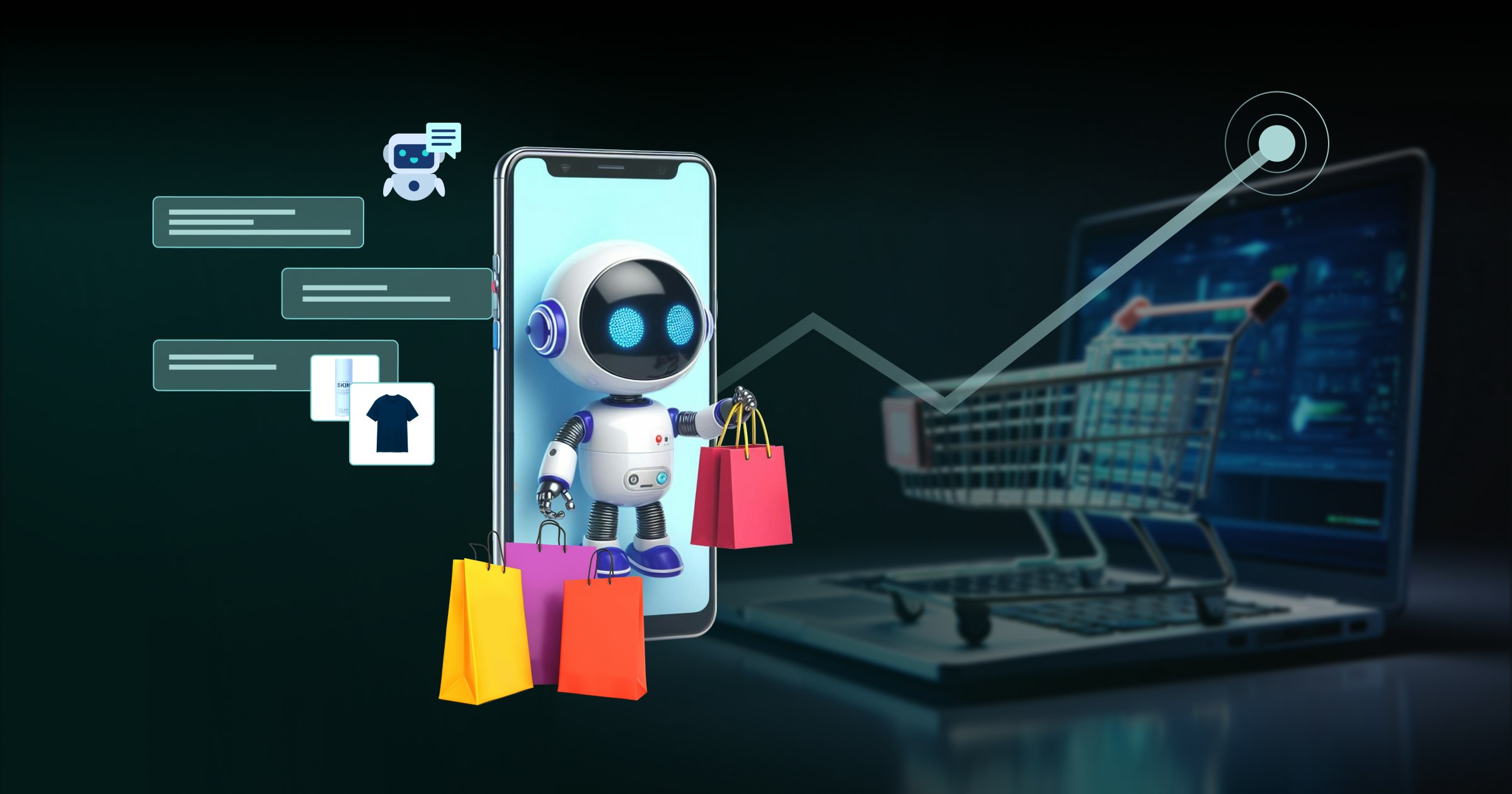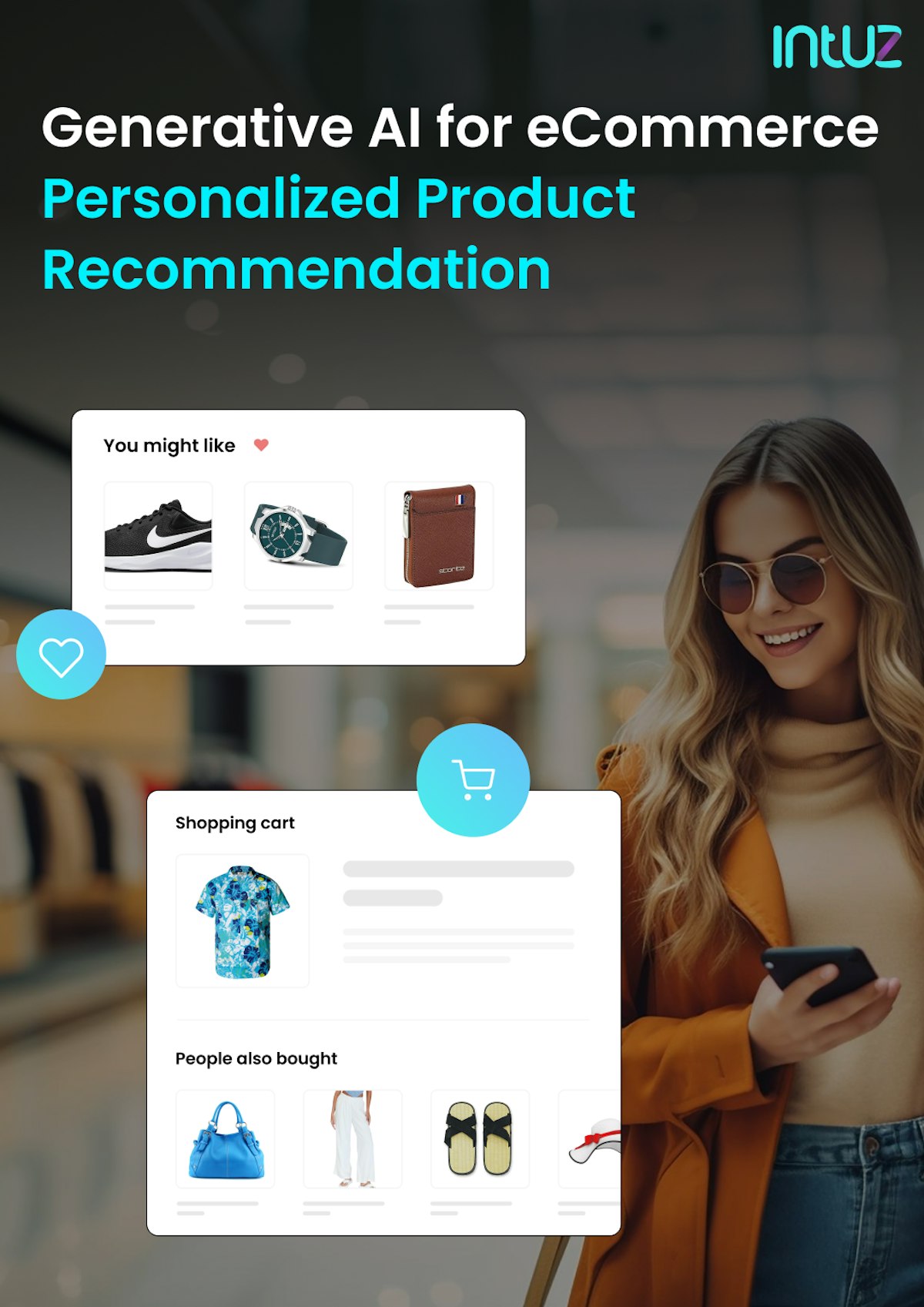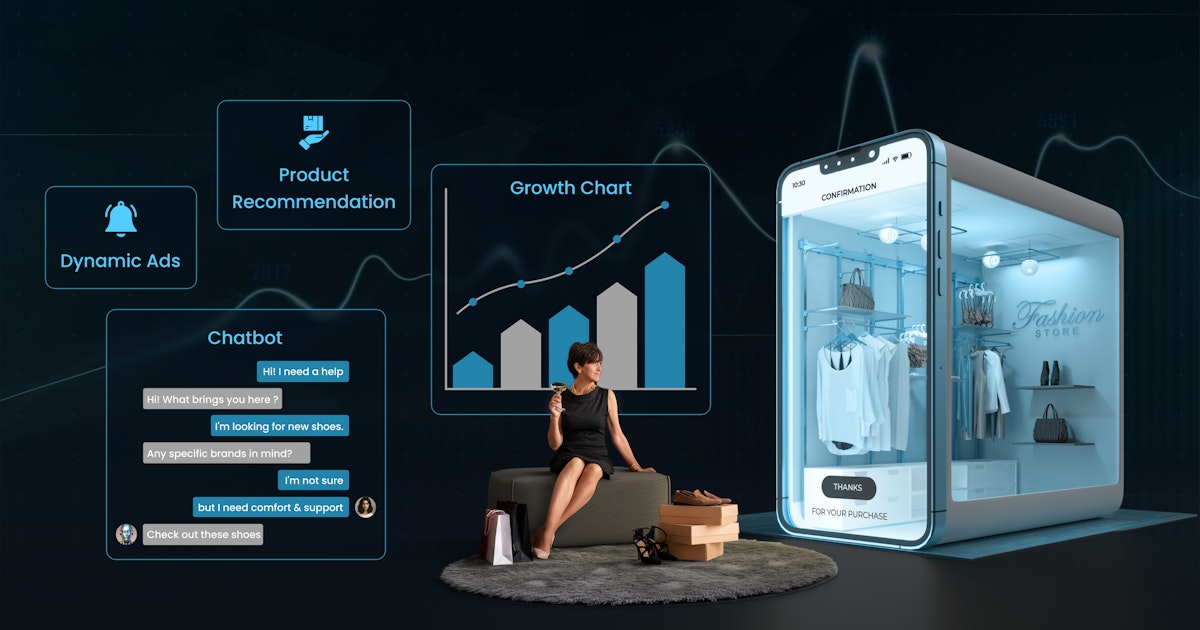Table of Content
Shopping online should be a breeze, but too often, it feels like wading through endless choices and conflicting information.
From diverse product selections and reviews to multiple vendors and pricing points, many factors make it harder to judge the quality, suitability, and best value of products online.
Plus, the whole buying experience isn’t as personalized. Generic recommendations, a one-size-fits-all site interface, and zero interaction with salespeople contribute to a less customized shopping spree and an unfulfilled purchase intent.
No wonder many carts are abandoned before checkout, 69.8% on average, causing eCommerce businesses to lose $18 billion in sales revenue annually.
What could be an ideal response as customers get harder to please and cost pressures rise at the same pace as service expectations?
What is an AI eCommerce sales assistant?
They’re digital tools that use artificial intelligence (AI) technology to recommend products, compare dynamic pricing, update inventory and stock, and provide customer support and checkout assistance.
Since online retailers who use Generative AI tools have already seen a 30% increase in sales, it makes sense to think of the AI shopping assistant as an extension of the sales team—a chatbot—but on a virtual platform.
From acquiring leads to following up with cold accounts (or abandoned carts) to handling customer queries, they do everything salespeople do. If you’re keen on maximizing your sales, check out six ways to do so with an AI shopping assistant.
Key takeaways
AI shopping assistants can analyze a user’s browsing history, purchase patterns, and search queries to tailor product suggestions.
Voice search, image recognition, and curated lookbooks take personalization in eCommerce applications a notch further by making product searches more efficient.
Virtual try-ons let potential customers see how products look on them in real-time, which addresses style, size, and fit issues and reduces return rates.
AI detects potential cart abandonment and sends reminders with incentives like discounts or free shipping to encourage purchase completion.
AI analyzes customer data to identify trends and predict future product demand; it helps with strategic stock replenishment and new product launches.
AI provides continuous customer engagement and support after purchase, encouraging repeat sales.
6 ways to maximize eCommerce sales with an AI shopping assistant
1. Personalize product recommendations
AI eCommerce assistants analyze a user’s browsing history, purchase patterns, and even search queries, especially the characteristics or descriptions of products a customer has input at the time of search or previously shown interest in.
These intelligent systems also look at what other users with similar tastes and preferences have liked or bought, predicting seasonal and perennial trends. With such data, they finely tune their suggestions and recommend products that customers will most likely purchase.
One of AI’s most effective strategies is its ability to upsell and cross-sell. According to McKinsey, these techniques have a history of yielding a 20% increase in sales and a 30% boost in profits.
For example, if a customer is looking at running shoes on your online sports store, your AI shopping assistant could suggest high-end running shoes (or brands) as an upsell, a fitness tracker as a cross-sell, and socks designed for runners as a complementary product.
2. Leverage smart product discovery
This technology-driven approach in eCommerce enhances the shopping experience by making it easier and more efficient for customers to find products they’re interested in. Here’s how you can incorporate smart product discovery:
a. Voice search
This speech recognition technology enables customers to initiate searches, ask questions about products, and even make purchases on your eCommerce store using just their voice—by speaking instead of typing.
For example, when a customer says, “Find me a blue men’s polo shirt under $50,” your AI shopping assistant will process this spoken input, understand the specifics, and display relevant results.
This hands-free approach makes the search process faster, more convenient, and accessible to customers who prefer not to use traditional typing-based interfaces or may have disabilities.
b. Image recognition
This technology analyzes product images uploaded by customers. It matches them with similar items in the store’s inventory based on various attributes, such as shape, color, size, and design elements.
Image recognition also suggests alternatives within the same aesthetic range, expanding the product catalog for customers.
c. Curated lookbooks
They’re a collection of images or photographs that showcase a particular style, trend, or product type.
AI sales assistants curate personalized lookbooks showcasing outfits or product combinations for individual customers based on your eCommerce business's data about them.
This concept is particularly popular in fashion.
For example, if someone frequently browses outdoor gear on your eCommerce store, AI could create a lookbook showcasing hiking boots, waterproof jackets, and trail accessories to inspire the customer to purchase.
You could also place pricing against each product or give a cumulative cost of buying everything from the lookbook.
Check out how Indian beauty and fashion brand Nykaa has created a “Denim Starter Kit:”
3. Facilitate virtual try-ons and AI styling suggestions
McKinsey reports that 70% of returns on eCommerce orders are due to style, size, and fit issues.
Wouldn’t you be happy to reduce your return-pickup costs if your customers were confident about their online purchases because they knew exactly how the product looked on them?
Virtual try-on technology can make that happen. Also known as “digital try-on” or “virtual fitting,” it involves using a mobile device or desktop camera and Augmented Reality (AR) to virtually “try on” products in real time.
The process is typically guided by an AI shopping assistant who provides instructions on positioning the camera, what lighting works best, and how to pose to get the most accurate results.
Once the imagery is captured, it assesses the customer’s body or face dimensions and shape to recommend clothing or accessory (e.g., sunglasses) sizes and fit that will best suit them, ensuring a higher likelihood of purchase and customer satisfaction.
The AI shopping assistant can also answer questions about product details, such as materials, care instructions, and more.
The Sephora Virtual Artist is quite popular in this space. It allows customers to get a virtual makeover using its infinite library of eyeshadows, lip colors, and false lashes—all without stepping a foot in a Sephora store.
Sephora’s AI assistant also gives a custom step-by-step tutorial for using the products, leaving no room for doubt or hesitation about purchasing.
4. Minimize cart abandonment
As we’ve established, cart abandonment is a nuisance for any eCommerce business. But there are mechanisms you can set up with the help of an AI shopping assistant. Let’s have a look:
a. Personalized reminders for cart recovery
AI sales assistants are adept at detecting when a cart might be abandoned—perhaps the customer has navigated away from the checkout page or has been inactive on the website for a certain period.
In response, you can trigger a personalized reminder and reignite interest by sending a pop-up chatbot message. You can also offer additional incentives, such as free shipping or a discount, to further compel them to complete the purchase.
The reminder doesn’t have to be overly elaborate; it can be as simple as the one shown below:
You can also send an email displaying the saved items along with targeted recommendations based on the customer’s browsing history.
For example, if a customer abandons a cart with a coffee maker, your reminder email should include a discount on coffee pods or suggest adding a milk frother as a complementary product at a special bundle price.
b. Proactive support during checkout
Research shows that 47% of customers are open to using e-commerce chatbots to make a purchase.
So, if someone hesitates or seems unsure during checkout, your virtual assistants can intervene by answering questions about shipping costs and return policies or suggesting alternative payment options.
This immediate assistance helps smooth out any uncertainties or obstacles that might deter them from completing the sale.
5. Predict demand and optimize inventory
Like any eCommerce business, you must hold a wealth of customer information at your fingertips—browsing history, past purchases, wishlist items, and interactions with products.
By aggregating and analyzing this data, your AI shopping assistant can identify emerging trends and predict which products will likely see increased demand. It can help you strategically plan for stock replenishment and new product launches.
For example, suppose you’re an online fashion retailer preparing for the 4th of July Sale. In that case, you can not only conduct your internal customer analysis but also monitor promotional impact in the market (e.g., advertising campaigns) and social media buzz (e.g., discussions, mentions, and product perception).
If your analysis predicts a high demand for pool-side pants and sarongs, optimize your inventory levels to maintain enough stock to meet the anticipated sales. That way, you can also reduce excess inventory that incurs unnecessary storage costs.
Additionally, the AI shopping assistant can suggest when to offer promotions or discounts on overstocked items, helping to clear inventory efficiently and maintain cash flow during lean periods.
6. Offer post-purchase support and targeted recommendations for repeat sales
Here’s a scenario: you run an online bookstore.
Every time a customer buys a novel from you, your AI shopping assistant sends them an email with the delivery tracking link and a list of recommended books by the same author or within the same genre.
A week later, it follows up to ask if the customer enjoyed the book and suggests signing up for a book club discount offered by your store, which provides members with monthly recommendations and exclusive deals on new releases.
You see, even after customers have bought once from you, there’s still scope to keep them engaged and informed in different ways, encouraging repeat sales and enhancing transparency and trust with the help of an AI shopping assistant. Concentrating on pre-sales tasks isn’t going to cut it anymore.
In the end, they want to feel valued and supported throughout their buying journey. Post-purchase support and targeted recommendations show you haven’t forgotten about them.
In conclusion
With an AI shopping assistant, you never leave your eCommerce store unmanned. You welcome customers with helpful information that directs them to the right products and maximizes their chances of sticking around and buying something from you.
If you want to deliver personalized experiences, manage inventory smartly, and bank on data-driven marketing strategies, you need to integrate AI into your eCommerce store.
Don’t waste time—book a 45-minute call with Intuz’s AI experts for a free consultation. You’ll receive a complementary strategy for seamlessly integrating an AI shopping assistant into your online store.






